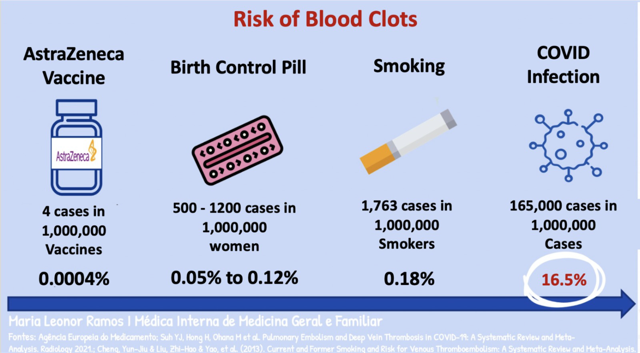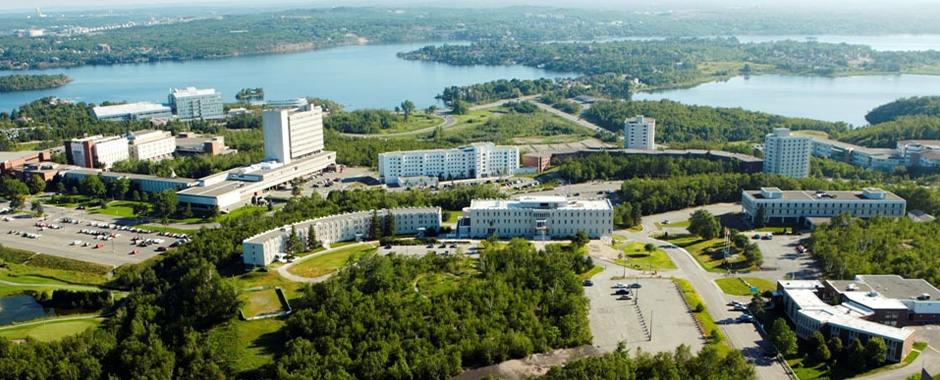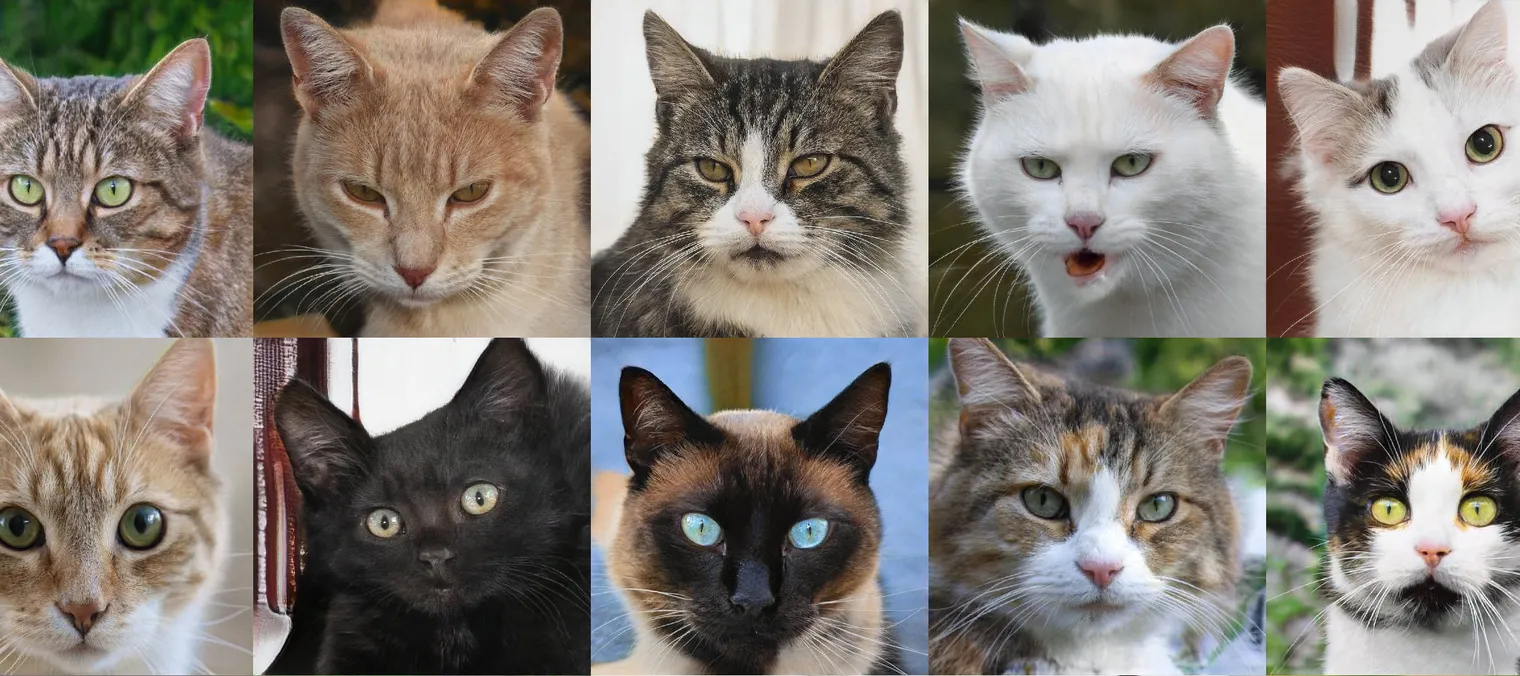Eduvation Blog
Friday, April 16, 2021 | Category: Eduvation Insider
Blood Clots, Consternation & Conspiracies
Good morning, TGIF, and happy “wear your pyjamas to work day” – as if you haven’t been doing that half the time anyway. (Ah, if only Quebec MP William Amos was so considerate!)
Would you believe it’s been an entire WEEK since I last summarized the state of the pandemic? (All it took was a university to implode.)
Today I’m going to try to catch you up on both files…
Pandemic Précis
Although scientists, statisticians, and most people with basic numeracy skills understand that exponential growth starts slow and quickly accelerates, it would seem that far too many politicians misunderstand…

Surging Third Wave
As I’ve been noting for months, the rise of VOCs – first the UK (B.1.1.7) variant, then the South African, but most seriously the Brazil P.1 – is fuelling exponential growth in infections. (A new Yale study finds that one vaccine is reduced to 50% effectiveness against P.1. And now P.1 is mutating to make it even better at evading antibodies.) With the 4-6 week mortality lag, we need to clamp down long before we have been, to avoid the inevitable peaks. India’s biggest cities have been shut down as daily cases hit 200,000 – and the country is starting to redirect vaccines from export to domestic use.
And Canada’s 7-day average has hit its highest level of the entire pandemic.

Chances are, you already know how bad the third wave of COVID19 is if you live in BC, Alberta, Saskatchewan,Manitoba, Ontario, or Quebec – and how much worse it may get. The reopening of the “Atlantic Bubble” has been pushed back until at least May 3. Just days after promising that students would return to classrooms after the April/March Break, Ontario announced they would be pivoting back to online indefinitely. (Heck, when Doug Ford is considering adding even stricter measures to a state of emergency and stay-at-home order, and is going door-to-door begging for more ICU staff, stuff’s getting real.) We all need to reduce our contacts by at least another third to avoid the collapse of our healthcare systems. (And we’ve seen complacency among all sorts of populations, from undergraduate students approaching their exams, to defiant churchgoers, or restauranteurs facing financial ruin.)
“We’re 10 days in [to Ontario’s stay-at-home order], and we’re hitting the highest numbers that we’ve seen and that trajectory is still upward — and upward quickly enough that it’s causing alarm.” – Susy Hota, medical director, University Health Network, Toronto
Vaccine Progress
The US has administered 198M doses now, with nearly half of American adults at least partially vaccinated, and 30% fully vaccinated. Yet, as restrictions are being lifted new daily infections have risen 11% in the US, and more COVID19 patients are being admitted to hospital. (And still, the half of Americans who aren’t yet vaccinated are in no hurry, either.) Here in Canada, we passed a vaccination milestone this week, with 20% of the population getting their first dose, and we shifted our rollout from a focus on those at greatest risk of mortality (seniors) to those at greatest risk of transmission: frontline workers. (And, you could argue, university students.) Many jurisdictions are organizing mobile vaccination initiatives at large workplaces.
Booster Shots “Likely”
Most clinical trials for the new COVID19 vaccines show that the mRNA vaccines (Pfizer and Moderna) retain most of their effectiveness for at least 6 months. We don’t know yet whether their protection lasts longer, but we also can expect new VOCs to arise. The Biden Administration is preparing for the possibility that booster vaccines will be needed, 9-12 months after initial vaccination. Pfizer CEO Albert Bourla says people will “likely” need a third dose as a booster within 12 months, and might need annual shots thereafter.
Vaccine Delays
Although Canada is supposed to be in the “ramp up” phase of vaccinations, shipments of Moderna, AZ and J&J vaccines continue to introduce delays and uncertainty. (Since the delays back in the winter, Pfizer has been consistently meeting their commitments every week.) So far, ~9M doses have been administered in Canada, but lately appointments have had to be cancelled or rescheduled due to shortages in some regions. Nonetheless, by June, Ottawa says Canada will have received 44M doses, enough that every eligible person should get a shot by Canada Day. Australia, on the other hand, may not get its population vaccinated until the end of 2022.
Vaccines & Blood Clots
There is now reason to believe that a rare blood clotting reaction, CVST, can be caused by both the AstraZeneca and Johnson & Johnson vaccines, and it can be fatal in ~20% of cases. The European Medicines Agency has found that 5 in 1M people develop CVST after the AZ vaccine, and overall there have been 222 cases out of 34M (or 6.5 in 1M). In the US, 6 people developed CVST after the J&J single-dose vaccine, which has been administered to ~7M people so far – so that’s 0.85 in 1M, about one-sixth the rate of AZ in Europe. Canada has confirmed 1 woman in Quebec developed a blood clot after the AZ (out of ~500,000 doses to date).
CVST has ~20% mortality. “The vaccine is clearly linked to this rare complication… we have a smoking gun,” says McMaster medicine prof Theodore Warkentin. (Although the risk is greater with oral contraceptives.) Australia has decided not to purchase the J&J vaccine. The US has temporarily suspended use of the J&J vaccine, and Denmark has completely abandoned the AZ. They both have plenty of Pfizer vaccines to use instead – although many US colleges had counted on using the J&J vaccine to inoculate their students before they left campus this spring.
“If we really want to have the normal summer that we all are desperate for, getting college students vaccinated over the next month to six weeks will actually make an enormous difference… [They are] very efficient spreaders of the virus.” – Ashish Jha, Dean, Brown University School of Public Health

Understanding Risk
Almost all pharmaceuticals have some potential side effects (just watch the fine print on any commercial), so eliminating all 1 in 1M risks may not be reasonable. But humans are also famously bad at understanding risk: consider that 39 in 1M COVID19 patients also develop CVST! That means that the odds of developing these rare blood clots are 8x greater if you go unvaccinated and catch COVID19, than if you take your chances with the AZ vaccine – and 46x greater unvaccinated than with the J&J. In fact, “you have a greater risk of being badly injured in a car crash while driving to your vaccination appointment.”
“We have to consider what the risk is of not taking the vaccine. I know people are really worried, but as a front-line physician myself… I think that people still should take the first vaccine that’s offered to them.” – Menaka Pai, Clinical Hematologist, McMaster U
Breakthrough Infections
As I told you last week, Brazil has become the “biological Fukushima” and the worldwide fallout is the P.1 variant of COVID19 – which appears able to evade immunity and vaccines much better than other strains. A preprint Israeli study has found the South African (B.1.351) variant can evade the Pfizer vaccine 8x more effectively. It’s also disheartening that the CDC reports 5,800 “breakthrough” infections: fully vaccinated individuals who nonetheless contract COVID19. (396 required hospitalization, and 74 died.) The data doesn’t yet tell us whether these vaccinated individuals were exposed to a VOC or not. But again, the statistics tell us that the vaccines are not 100% effective, so breakthrough cases are expected.
So What Lies Ahead?
The big question remains, when can we get students back to campus? So far, as I’ve been monitoring hundreds of institutional announcements, everyone in Canada is moving spring and summer convocations online, delivering courses “predominantly” online, and cancelling most in-person summer camps. Even Japan admits it might have to cancel the summer Olympics, as it faces a 4th wave of infections and has vaccinated just 1.4% of the population.
Between covidiots, antimaskers, blood clots, vaccine hesitancy, vaccine nationalism, production delays, and breakthrough variants, at this point it’s a mug’s game to predict where we’ll be by Fall term. As has been the case for 14 months now, we just need to get comfortable with uncertainty, plan for multiple contingencies, and ensure our systems are resilient and nimble so we can cope with whatever this pandemic throws at us.

Consternation & Conspiracies
There is much mystery in what remains UNSAID about Laurentian’s insolvency, and the decisions that appear, on the face of things, to make no rational sense…
“Major Milestones” Completed
LU president Robert Haché issued a statement yesterday, also published as an op-ed in the Sudbury Star, announcing the completion of “a number of major milestones” in the CCAA process. (The statement was criticized by many as a “tone-deaf” way to celebrate hundreds of student, staff and faculty lives upended by cuts announced on Monday.) Paperwork is being prepared to move into phase 2 as planned on Apr 30, with additional funding to keep LU afloat financially until Aug 31 as it negotiates with creditors (including major banks, the tri-councils, and retired employees) and potentially explores liquidation of assets. Next week, Haché promised, new documents will be released to allow us “to better understand the circumstances and decision making that took place” during the CCAA proceedings. (I hope so!)
Midwifery Cost LU Nothing
Among the 69 programs cut on Monday for “low enrolment” was Canada’s only bilingual Midwifery program – and unlike the others, it was extremely popular with students and cost LU nothing. The program attracted 300 applications last year, for just 30 available seats – a cap imposed by the province. Since the program is grant funded by MCU and the Ministry of Health, “Laurentian does not pay for this program at all.” (Supporters of the program are circulating a petition in English and en français, with a deadline of today.) The Lambda
The Ontario government has given its first indication of how it intends to support northern education, after allowing Laurentian to implode…
Independence for NOSM, Hearst
MCU Ross Romano announced yesterday that the province has introduced legislation to make the Northern Ontario School of Medicine (currently a joint venture between Lakehead and Laurentian) and Université de Hearst (currently an affiliate of Laurentian) independent, degree-granting institutions in their own right. Unlike other affiliates in Ontario, NOSM and Hearst already receive provincial funding directly. The change would permit them to expand to new campuses and “make choices about future partnerships.” NOSM enrolled ~460 full-time students this year, and Hearst ~160. (It’s unclear whether this is good or bad news for uSudbury’s prospects of pursuing independence.) Ontario
While Ottawa can’t directly intervene until the province asks, it CAN make sure that CCAA isn’t an option for any other universities…
Bill to Block CCAA for PSE
At Wednesday night’s emergency House of Commons debate about the LU insolvency, Sudbury MP Paul Lefebvre (a Liberal) announced that he will be tabling a private member’s bill on Monday to amend the Companies’ Creditors Arrangement Act “to prevent other universities from going down the same path as Laurentian.” Timmins-James Bay MP Charlie Angus (NDP) expressed similar concern that other public institutions could be dismantled or privatized. “The carnage and the anxiety that I’ve seen in my community should not be repeated anywhere else in the country.” CBC
I’ve been emphasizing the mystery in the correspondence between MCU and LU administration in late January, just days before the insolvency announcement, which the CCAA court has ordered sealed because its contents could be “detrimental to any potential restructuring.” (I have been speculating that perhaps MCU offered emergency funding, which LU turned down. Or perhaps MCU promised more money after the CCAA proceedings eliminated much of the debt.) If you love such conspiracy theories, though, Alex Usher points out another…
About Desjardins’ Credit Line…
Sometime last summer, one of LU’s major bank lenders, Desjardins, somehow got paid out in full, while RBC and TD were left holding $90M in debt as the university slipped into creditor protection. Alex Usher asks if the bank called its line of credit, what tipped them off? Or worse, did LU “actually choose to renounce the line of credit in order to provoke a crisis? (The careful wording of Haché’s affidavit is ambiguous on this point.)” As I’ve suggested before, Alex also points out that “Laurentian’s problems could have been solved with much less fuss” if MCU had simply loaned them ~$35M for repayment over 5-7 years. (I think one or both parties – MCU and LU’s administration or board – must not have wanted to avoid the university’s implosion. If so, I think they seriously underestimate the long-term damage this will do to the university.) HESA
And while the only source so far is in French, there’s one more conspiracy theory out there about francophone PSE in Ontario…
Plotting the Death of UOF
Back in 2018, just 3 weeks before the Ford government cancelled the Wynne government’s planned Université de l’Ontario Français, it held what Radio Canada calls a “secret meeting” with uOttawa president Jacques Frémont, Collège Boréal president Daniel Giroux, acting LU president Pierre Zundel, and his predecessor Dominic Giroux. Out of concern about competition diluting Francophone PSE in Ontario, one proposal in the meeting was to shelve the UOF project, and instead fund a Toronto campus to be managed by LU and UO. Dominic Giroux in particular warned that UOF was “doomed to failure” like the Collège des Grands Lacs in 2002. (Certainly UOF faces steep odds: by Jan 24 they had received just 39 applications for Fall 2021.) Radio-Canada
#ICYMI
It’s Friday and it’s been a long week, so time for something lighter than usual…

Fake Felines
We’ve all seen deepfake videos of famous actors and politicians. Well, now there’s an AI algorithm (a Generative Adversarial Network) that can create cat pics from thin air. And as one Verge contributor remarks, “soon the internet will make its own cat photos and then it won’t need us.” If you get really bored this weekend, and you really love cats, visit ThisCatDoesNotExist.com and just keep hitting refresh…
As always, thanks for reading, and I hope you have a wonderful – and safe! – weekend.

All contents copyright © 2014 Eduvation Inc. All rights reserved.
